The organic cosmetics market is worth €48 billion globally, but greenwashing has become more sophisticated. According to an EU study, 42% of organic claims on beauty products are exaggerated or false. This guide will teach you how to decipher labels like an expert and choose truly sustainable products.
1. Understanding Key Terminology
Regulated vs. Unregulated Terms
- Certified vs. Natural:
- “Natural”: No legal definition → may contain only 1% natural ingredients
- “Certified Organic”: Requires independent verification (minimum 95% organic ingredients)
INCI List: The Secret Code
- What is it?: International Nomenclature of Cosmetic Ingredients
- Order of ingredients: From most concentrated to least concentrated
- First 5 ingredients: Represent 80% of the formula
2. Ingredients that MUST Alert You
The 7 Prohibited in Real Cosmetics
- Parabens (butylparaben, propylparaben)
- Problem: Hormone disruptors
- Alternative: Natural preservative systems (benzoic acid)
- Phthalates (DEP, DBP)
- Problem: Linked to problems Reproductive Health
- Alternative: Vegetable oils as plasticizers
- Silicones (dimethicone, cyclomethicone)
- Problem: Non-biodegradable, clog pores
- Alternative: Vegetable butters
- Sulfates (SLS, SLES)
- Problem: Irritants, water pollutants
- Alternative: Coco-based surfactants or glucosides
- PEGs (polyethylene glycol)
- Problem: Potential contamination with ethylene oxide
- Alternative: Vegetable emulsifiers
- Synthetic fragrances (“parfum”)
- Problem: Allergens, unspecified
- Alternative: Pure essential oils
- Chemical UV filters (oxybenzone, octinoxate)
- Problem: Damage to coral reefs
- Alternative: Non-nano zinc oxide
3. Certifications that DO Matter
The 5 Most Demanding Certifications
- COSMOS Organic (Europe)
- Requirements: 95% organic ingredients, sustainable packaging
- Code: Certified by ECOCERT, Soil Association, etc.
- Natrue (International)
- 3 stars: Highest quality, 100% natural ingredients
- BDIH (Germany)
- Focus: Plant-based ingredients, no animal testing
- Ecocert (France)
- Two levels: Organic (95%) and Natural (50%)
- USDA Organic (USA)
- Green seal: 95% organic
- Black seal: 100% organic
4. How to Detect Greenwashing in 2025
Common Deceptive Strategies
- “Inspired by nature”: Does not mean it contains natural ingredients
- Green packaging: Green color and leaves ≠ organic product
- Vague claims: “Environmentally friendly” without certification
- Exclusion lists: “Paraben-free” but with other controversial ingredients
3-Step Verification
- Scan the QR code (required in the EU since 2024)
- Check the INCI list on apps like ThinkDirty or INCI Beauty
- Check certifications in official databases

5. List of Ingredients You DO Want to See
True Bioactive Ingredients
- Vegetable oils: Argan, jojoba, rosehip (at the top)
- Plant extracts: Calendula, chamomile, aloe vera (specific, not “flower extract”)
- Natural waxes: Carnauba, candelilla (alternatives to beeswax for vegans)
- Natural preservatives: Citric acid, grapefruit seed extract, vitamin E
Percentages that Matter
- “With argan oil”: Must specify percentage (ideally >5%)
- “Extract of…”: Must appear in the first half of the INCI list
6. Packaging Counts Too
Real Recycling Codes
- PET1: Recyclable but releases microplastics
- HDPE2: Better option (high density)
- Glass: Infinitely recyclable
- Bioplastics: Only if industrially compostable
Verifiable Packaging Claims
- “100% recycled” vs. “Recyclable” (does not mean recycled)
- “Compostable packaging”: must specify conditions
- “Collection program”: the brand must provide details
7. Key Questions for the Manufacturer
To Ask on Social Media or the Web
- “What percentage of ingredients are organic?”
- “Where can I see your sustainability report?”
- “Is the packaging really recycled/recyclable?”
- “Do you have Fair Trade certification for your ingredients?”
8. Trend 2025: Radical Transparency
New Standards
- Blockchain Traceability: From Crop to Packaging
- Printed Carbon Footprint: On the Label
- Virtual Water Declaration: Product Water Consumption
Verification Apps
- EcoBeauty Check: Scan and Rate Products
- CodeCheck: Real-Time Ingredient Analysis
- Clean Beauty AI: Identifies Greenwashing with Artificial Intelligence
“An honest label doesn’t need to hide behind green landscapes or empty words. The ingredients are its best story.” — Dr. Ana Ruiz, cosmetic chemist.



